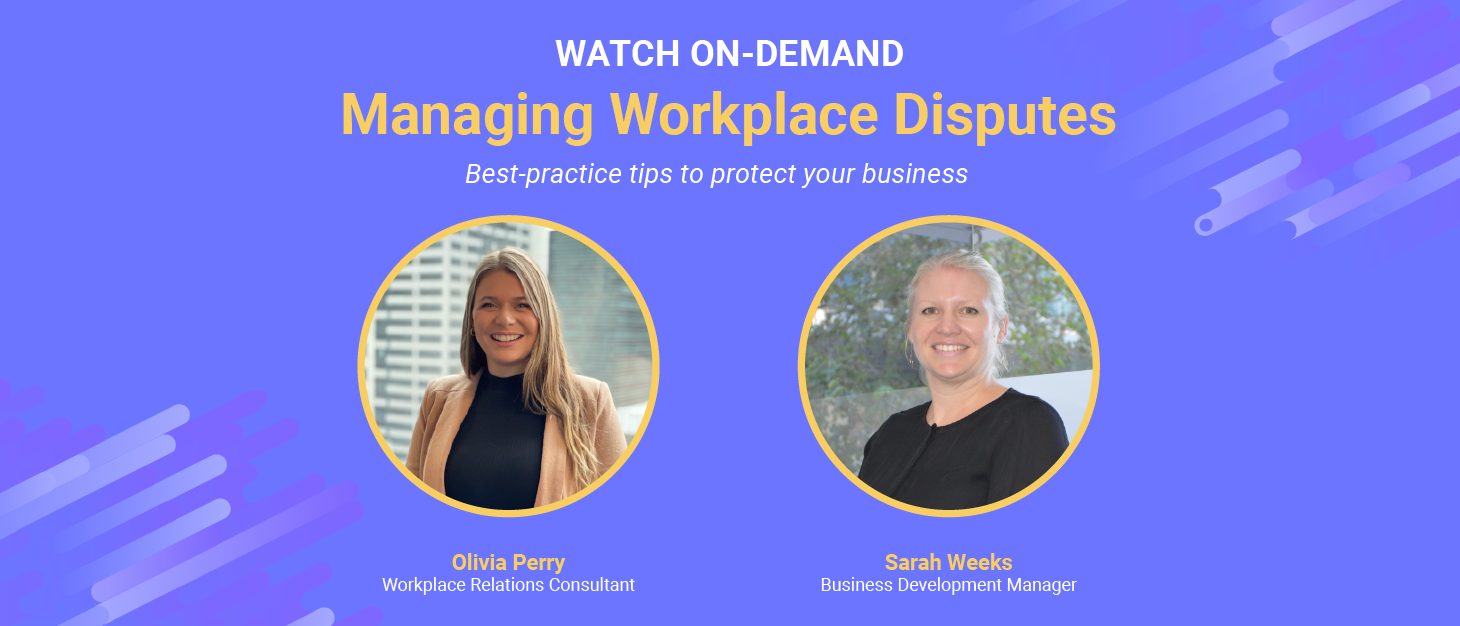By Mehmet Musa
With an array of different personality types filling office desks, cash registers and drivers’ seats around Australia, it’s only natural that from time-to-time workplaces experience conflict. As a business owner or manager, however, it’s your role to manage conflict within the workplace to minimise disruption and promote a safe working environment.
Here we share our best-practice tips and advice for handling workplace disputes, explain what crucial conversations are, and why it’s vitally important you don’t infringe employment rights.
Let’s get into it.
Work-related disputes between an employee and management
In addition to personality clashes and interpersonal conflict, our workplace relations laws, including certain elements of the Fair Work Act (2009) (FWA), can either be ambiguous or require employers and employees to discuss and agree on various matters, which naturally leaves room for disputes to occur. A simple example of this would be taking annual leave since it’s up to each employer and employee to agree on when and for how long annual leave can be taken. Though the employer must not unreasonably refuse an employee’s request to take annual leave, what constitutes reasonable may vary from person to person.
It’s advisable for the employee and their manager to first try to resolve the dispute through discussion. Often, understanding the other party’s needs and concerns can assist in reaching a mutually acceptable outcome.
Where this doesn’t resolve the matter, or it’s inappropriate for the manager to be involved (for example, if there are allegations of bullying against that manager, or they don’t have oversight over the subject matter of the dispute), the employee should be encouraged to escalate the dispute to more senior management levels.
Once this process has been exhausted, the parties may look to external support for the resolution, such as through private mediation or via the Fair Work Commission (FWC) (which has various powers to resolve certain disputes, including mediation, conciliation, and arbitration). It should be noted that the process of dispute resolution under each award or enterprise bargaining agreement (EBA) may vary, and managers should check their award or EBA to ensure that the dispute resolution process is appropriate and within the scope of that instrument.
More than a work-related dispute
Sometimes, a situation escalates to something more than a mere disagreement about work, such as where a dispute about the allocation of work transforms into something more serious, such as allegations of bullying or discrimination.
Management should be acutely aware of an employer’s obligations regarding bullying, harassment, discrimination, and general protections. When an employee makes a complaint about his or her employment, this may give rise to a workplace right and adverse action must not be taken because of this right.
Tips and tricks for resolving conflict between employees
Effective communication
When you’re faced with a scenario involving conflict between your employees, the key to resolving conflict is clear communication. When first raising the issue with team members, a face-to-face conversation is always preferred, as it facilitates better and smoother conversation than written communication or even meetings which rely on technology.
If you’re raising certain behaviour to the employee, you need to have key examples of what’s alleged to have occurred, and when. You should ensure that you’re listening as well as speaking: ask yourself whether you’ve given your employee a chance to explain how the situation made them feel? There are multiple sides to every story, and an employer should reserve judgment or decision-making until each relevant party has been given their chance to speak.
Before having the conversation with an employee, ask yourself:
- What do I know (the facts)?
- What do I want to know?
- What do I want to happen (managing expectations or standards)?
- What will the successful outcome look like?
- What risks do I need to factor in and how can I manage them?
Managing a complaint
If you receive a complaint, how should you best respond?
- You need to respond promptly, even if it may not be urgent. This will show the employee/s that you’re listening and consider their welfare important.
- Treat all matters seriously. While something might seem quite minor or comical to you, to someone else it’s in the forefront of their mind.
- Maintain confidentiality. Only the people who need to know about what has happened and management’s response should be kept informed.
- Ensure procedural fairness. Each person needs to know that their version of events is being given a fair hearing.
- Support all parties – both parties need to know that they have support, e.g., do you provide an employee assistance program? Interviewees should be offered to bring a support person to attend interviews.
- If a matter needs to be escalated to a misconduct meeting, ensure procedural requirements are met.
Crucial conversations
Conversations dealing with conflict in the workplace are what we call crucial conversations. Why are they crucial? Stakes are high, emotions are strong, and opinions vary.
When having a crucial conversation, you need to ensure a safe zone. A safe zone comprises two things:
- Mutual purpose: where both parties believe they’re working towards a common goal in the conversation, and that both parties care about the goals, interests, and values.
- Mutual respect: Where both parties respect each other. Where mutual respect exists, we tend to actively listen to each other and acknowledge feelings, perspectives, and differences without judgment.
Employees are often encouraged to sort out their differences themselves without involving management. But have you equipped your employees with the right communication tools to take part in a crucial conversation? People come from different backgrounds, with different values, and different ideas of what is right and wrong.
To ensure employees are responding effectively, a simple three-step process should be followed:
- Stop – is it appropriate to react or respond immediately?
- Look and listen – am I in ‘Fight or Flight’ mode? Do I have to approach this situation alone?
- Proceed – should I remove myself from the situation? Should I provide immediate feedback? Do I need to ask for help?
Equipping your employees with the right tools to respond to and manage conflict is half the battle in managing conflict in the workplace.
Conflict management is an important part of people management and employers must get this process right every time. If you have any questions about how to manage workplace disputes and disagreements, please reach out to our experts via our 24/7 Telephone Advisory Service.





